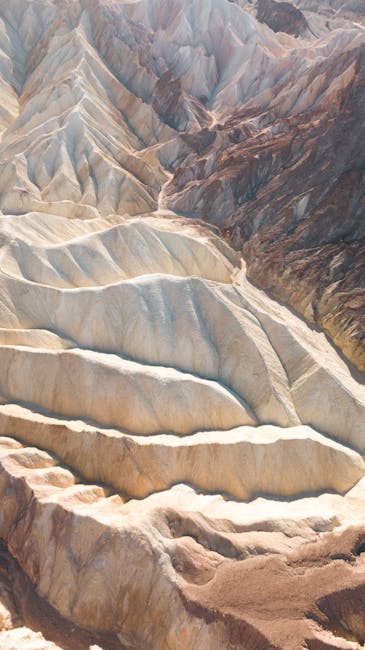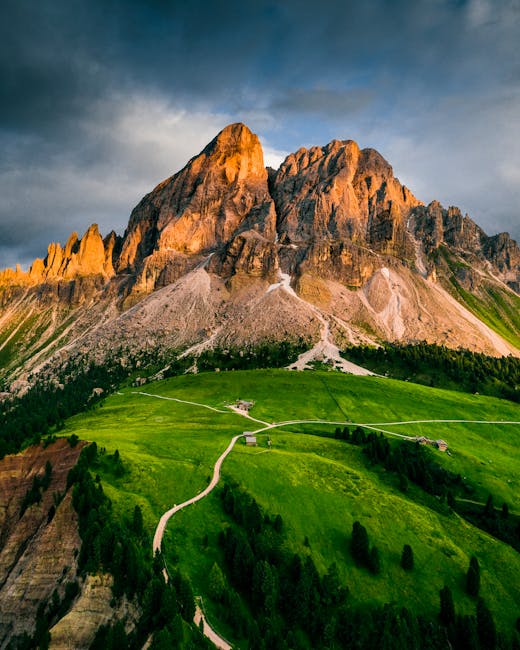Exploring the Majesty of High Cliffs: A Deep Dive into Dramatic Landscapes
High cliffs, those imposing, breathtaking walls of rock that rise dramatically from the earth, represent some of the most visually stunning and geologically significant landscapes on our planet. Their sheer scale and imposing presence evoke a sense of awe and wonder, drawing adventurers, scientists, and nature lovers alike. This comprehensive exploration delves into the diverse world of high cliffs, examining their formation, the unique ecosystems they support, and the thrilling activities they offer.

The Geological Formation of High Cliffs
The creation of high cliffs is a complex process shaped by a variety of geological forces over millions of years. Several key processes contribute to their formation:
- Faulting and Tectonic Activity: The movement of tectonic plates can cause massive fracturing of the earth’s crust, leading to the uplift of landmasses and the formation of steep cliffs. The San Andreas Fault in California is a prime example of how tectonic activity can create dramatic cliff faces.
- Erosion and Weathering: The relentless action of wind, rain, ice, and waves gradually erodes softer rock formations, leaving behind more resistant rock that forms the cliffs. Coastal cliffs, for example, are often shaped by the constant pounding of ocean waves.
- Glacial Activity: Glaciers carve out vast valleys and fjords, leaving behind steep, towering cliff faces. The dramatic fjords of Norway are a testament to the power of glacial erosion.
- Volcanic Activity: Volcanic eruptions can create dramatic cliffs as solidified lava flows cool and erode over time. The volcanic cliffs of the Canary Islands showcase the power of volcanic processes in shaping landscapes.
Rock Types and Cliff Characteristics
The type of rock composing a cliff significantly influences its characteristics. Granitic cliffs, for instance, are known for their strength and resistance to erosion, often resulting in near-vertical faces. Sedimentary cliffs, composed of layers of sandstone, shale, or limestone, may be more susceptible to erosion and exhibit less uniform structures, often featuring ledges and overhangs.
Unique Ecosystems of High Cliffs
High cliffs provide habitat for a variety of specialized flora and fauna adapted to the unique conditions of these challenging environments. The steep slopes, exposure to wind and weather, and limited soil create a niche environment supporting specific species.

- Cliff-Dwelling Plants: Many plants have evolved unique adaptations to thrive in the harsh conditions of high cliffs. These include specialized root systems to anchor themselves to the rock face and drought-resistant mechanisms to survive in arid environments. Examples include certain types of succulents and hardy grasses.
- Birds of Prey: High cliffs provide ideal nesting sites for many species of birds of prey, such as eagles, falcons, and vultures. The high vantage points offer excellent hunting grounds and protection from ground-based predators.
- Marine Life (Coastal Cliffs): Coastal cliffs support rich marine ecosystems. The underwater cliffs provide habitat for various fish, invertebrates, and algae, while seabirds utilize them for nesting and foraging.
Conservation Concerns
The fragile ecosystems of high cliffs are vulnerable to various threats, including habitat loss due to development, pollution, invasive species, and climate change. Conservation efforts are crucial to protect these unique environments and the biodiversity they support. Sustainable tourism practices are vital to minimize the impact of human activities on these sensitive areas.
Thrilling Activities on High Cliffs
High cliffs offer a range of exciting activities for adventurers seeking a thrill. However, safety precautions and proper training are essential before undertaking any of these activities.
- Rock Climbing and Bouldering: High cliffs provide spectacular settings for rock climbing and bouldering, offering challenges for climbers of all skill levels. Always use appropriate safety gear and climb with experienced partners.
- Hiking and Trekking: Many cliff areas offer stunning hiking trails with breathtaking views. Choose trails appropriate for your fitness level and always be aware of the potential risks associated with cliffside hiking.
- Birdwatching: High cliffs are prime locations for birdwatching, offering opportunities to observe a diverse array of bird species, including many migratory birds.
- Paragliding and Hang Gliding: For the truly adventurous, paragliding and hang gliding offer exhilarating flights overlooking the dramatic cliffs and surrounding landscapes. Always use certified equipment and experienced instructors.
Safety First
When engaging in any activity near high cliffs, prioritize safety. Always be aware of your surroundings, check weather conditions, and use appropriate safety gear. Never underestimate the potential dangers of heights and falling rocks. Never attempt any activity beyond your skill level.
Famous High Cliffs Around the World
From the dramatic cliffs of Dover to the towering peaks of Yosemite, high cliffs are found in diverse locations around the globe. Each location offers unique characteristics and stunning views. Here are just a few examples:
- White Cliffs of Dover (England): Iconic chalk cliffs known for their dramatic beauty and historical significance.
- Yosemite Valley (California): Home to some of the world’s most famous granite cliffs, offering breathtaking views and challenging climbing routes.
- Mogan Cliffs (Ireland): Dramatic sea cliffs offering spectacular coastal scenery and opportunities for birdwatching.
- Preikestolen (Norway): A renowned cliff pulpit offering breathtaking panoramic views of Lysefjord.
- Cliffs of Moher (Ireland): Awe-inspiring cliffs rising dramatically from the Atlantic Ocean, a popular destination for tourists and photographers.
Exploring the majesty of high cliffs allows us to appreciate the power of nature and the intricate beauty of our planet. From their geological formation to the unique ecosystems they support, high cliffs represent some of the most impressive and captivating landscapes on Earth. Remember to approach these magnificent locations with respect and adhere to safety guidelines to protect both yourself and the environment.


